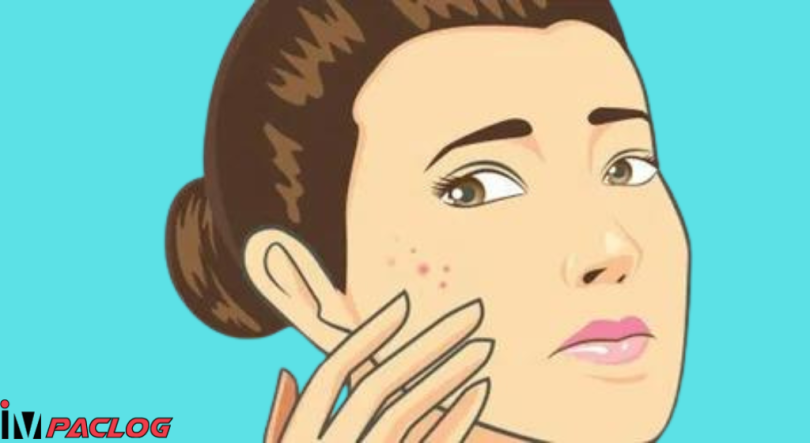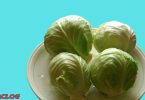Spots on the head are usually easy to recognize. They appear as small bumps or pimples that may be red, white, or yellow. Blisters can be painful to touch or just annoying.
Stress pimples are pimples or blackheads that appear on the face, usually on the forehead, cheeks, or chin. They are often accompanied by redness and itching and can be very annoying.
Seborrheic dermatitis is an inflammation of the skin characterized by itching, redness, and peeling. Seborrheic dermatitis is a common and chronic skin disease. It is characterized by red, scaly lesions located on the scalp, face (especially around the eyebrows and around the eyes and nose), and trunk.
White scales on the scalp are a common symptom of seborrheic dermatitis. Seborrheic dermatitis is a chronic skin condition characterized by inflammation and flaking (flaking skin) of the scalp.
Why do I have pimples on my head?
Pimples on the head are often caused by the accumulation of sebum and dead skin cells. It can be caused by poor hygiene, a high-fat diet, stress, pollution, or even hormones.
Pimples on the head are often caused by an allergic reaction. The substances responsible for this allergy are called allergens. Allergies are often caused by the foods we eat, medications we take, animals we touch, or plants we breathe.
Scalp acne is a common skin condition manifested by pimples on the scalp.
The cause of pimples on the head is often dandruff. Dandruff is an itchy and flaky scalp. It can be dry or oily and is often accompanied by itching.
How do you get rid of pimples on your head?
There are several ways to get rid of pimples on your head, but the best way is to prevent them. Here are some tips: – Wash your hair daily with a mild shampoo. – Use a wide-tooth comb to avoid hurting your scalp. – Avoid touching your face and scalp with your hands. – Eat a healthy and balanced diet.
Pimples on the head are often caused by the accumulation of sebum and dead cells in the pores. To care for it, it is important to clean it well and exfoliate it regularly. You can also use products that contain antibacterial ingredients, such as tea tree oil, to prevent new spots.
There are several ways to effectively get rid of pimples on your head. The most common method is to use an anti-acne product, such as a gel or cream. You can also use a mask made from plants or natural products.
Rinse with water: To remove pimples on the head, it is important to clean the affected area well with mild soap and lukewarm water.
Body areas: Where can pimples appear?
Pimple/pimple on scalp on the skull
Scalp pimples Scalp pimples are pimples or pimples that appear on the scalp. Scalp pimples are often associated with itching and can be very annoying.
Pimples in the nose
Pimples in the nose are often associated with a cold or allergies. Pimples in the nose can also be caused by a bacterial or viral infection. Nasal pimples are generally harmless and usually go away without treatment.
Pimple on forehead
Pimples on the forehead are usually caused by the accumulation of oils and dirt in the skin pores. It can also be caused by factors like stress, pollution, excessive sweating, etc.
Face button
Pimples on the face are usually associated with acne. Acne is a common skin condition characterized by pimples and/or cysts. It mainly affects teenagers but can also affect adults.
Pimples on the body
Pimples on the body are usually caused by skin irritation. They can be caused by friction with clothing or by contact with an irritating or allergenic substance. Pimples on the body can be annoying, but they are usually not serious
Pimples on cheeks
Pimples on the cheeks are usually caused by the accumulation of oils and dead cells in the skin pores. They can be caused by stress, unbalanced diet, poor skin hygiene or even hormonal changes.
Button on neck
Pimples on the neck are usually caused by sweating and friction of the skin with clothing. Pimples can also be caused by allergies to cosmetic products or by contact with irritating materials such as synthetic fabrics.
Neck button
Neck pimples are a fairly common skin condition. It appears by the presence of spots, black dots, or white spots at the top of the neck, at the base of the neck. Neck blisters are often associated with itching and can be very bothersome.
Button behind the head
Pimples on the back of the head are usually caused by allergies. Food allergies are common, but there are also chemical, pollen, and animal allergies. Pimples on the back of the head can also be caused by infections, eczema or psoriasis.
How to treat scalp acne?
Scalp acne is a type of acne that appears on the scalp and can cause itching, pain, and pimples. It is recommended to consult a general practitioner or dermatologist to ensure that it is indeed acne and to find the most suitable treatment for your treatment.


